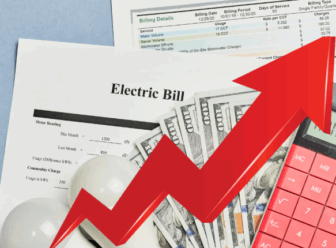 Eight tornadoes blew through Virginia on April 28, leaving 145 families homeless and 200 injured. The Washington Post reported that cost estimates could top more than $21 million. See a moving picture gallery of the tornado here>>
Eight tornadoes blew through Virginia on April 28, leaving 145 families homeless and 200 injured. The Washington Post reported that cost estimates could top more than $21 million. See a moving picture gallery of the tornado here>>
The storm, despite the fact that it was confined to a few neighborhoods, put the city at a standstill. The most severe tornado ran along a 10 mile path that reached a quarter mile wide, demolishing houses, stacking cars on top of another and literally stripping the roof off a shopping center. Families were denied entrance to their homes as the rain damaged what was left of their belongings. This was a sudden and astonishing tragedy that, though it took no lives, will take considerable effort to recover from.
One of the tornadoes, in Suffolk, was rated “Severe” intensity. There have only been 9 other tornadoes of this intensity in this region since 1966, 42 years. 2008 has already set early tornado season records. 232 tornadoes were reported in the US in February, beating a previous record set in 1972 at 83.
Tragedies like this force us to ask ourselves what could have been done to prevent the damages this stormed caused and are we prepared to deal with future extreme weather events? These are difficult questions to consider, but we may have to consider them more if global warming continues unabated. A recent study by the NASA Goddard Institute shows that our area can expect stronger wind events because of a warming climate. “In the warmer climate simulation there is a small class of the most extreme storms with both strong updrafts and strong horizontal winds at higher levels that occur more often, and thus the model suggests that the most violent severe storms and tornadoes may become more common with warming.”
It’s impossible to link a single storm to climate change, but what scientists seem to be saying is that you can make a pretty accurate prediction that Virginians are going to see more severe weather in the next 50 years than we have in the last 50 years. Despite the fact that we can’t connect the specific events on April 28 to climate change, it fits nicely with the strange, severe weather we’ve seen in the past year: wildfires in Virginia, 70 degree days in January, intense snow storms in the Midwest. The question is, considering the risk involved do we need to exacerbate the problem?
Every new coal plant gets us one step closer to catastrophic climate change. A single coal plant like the one proposed in Wise County Virginia would be a huge emitter of carbon dioxide




